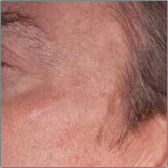

Bien qu'il ne soit pas possible d'éliminer complètement une cicatrice, les chirurgiens plastiques peuvent souvent en améliorer l'apparence pour la rendre moins visible, grâce à l'injection ou l'application de certains médicaments à base de stéroïdes ou à des procédures chirurgicales appelées révisions de cicatrices. Il existe différents types de cicatrices, ce qui peut influencer le type de traitement dont vous avez besoin. Votre médecin ou votre dermatologue doit effectuer un examen détaillé pour déterminer s'il s'agit d'une cicatrice hypertrophique, chéloïde ou atrophique.
Procédures de traitement des cicatrices :
Relissage au laser : un laser à pulsations à haute fréquence pénètre la peau de la cicatrice et concentre sa chaleur sur la couche cellulaire. Cette chaleur détruit la couche cellulaire et coupe la circulation sanguine dans les tissus de la cicatrice, ce qui finit par entraîner la réduction de celle-ci. Plusieurs traitements à deux ou trois mois d'intervalle peuvent s'avérer nécessaires pour enlever la plus grande partie de la cicatrice, voire la totalité.
Renseignez-vous sur le relissage au laser.
Dermabrasion : en raclant la surface de la cicatrice, il est possible de réduire la partie proéminente et de favoriser la croissance de nouvelles cellules grâce à la dermabrasion. Lorsque le traitement de dermabrasion est terminé, la zone traitée formera une croûte et commencera à guérir, formant ainsi une meilleure cicatrice avec de la peau neuve. Les cicatrices chéloïdes difficiles à traiter sont celles qui réagissent le mieux à ce traitement; toutefois, cette procédure n'est pas recommandée pour les cicatrices mineures, car on échange alors une cicatrice contre une autre.
Renseignez-vous sur la dermabrasion.
Excision chirurgicale : dans certains cas, il peut être nécessaire d'enlever complètement la cicatrice au moyen d'une excision chirurgicale. Dans un tel cas, l'ancienne cicatrice est remplacée par une nouvelle qui est plus symétrique ou moins visible.
Injections de collagène : dans le cas de cicatrices atropiques, qui sont renfoncées, il est possible d'injecter du collagène dans les couches plus profondes de la cicatrice pour aider à la soulever et à affleurer le reste de la surface de la peau.
Durée du rétablissement : Dépend du traitement.